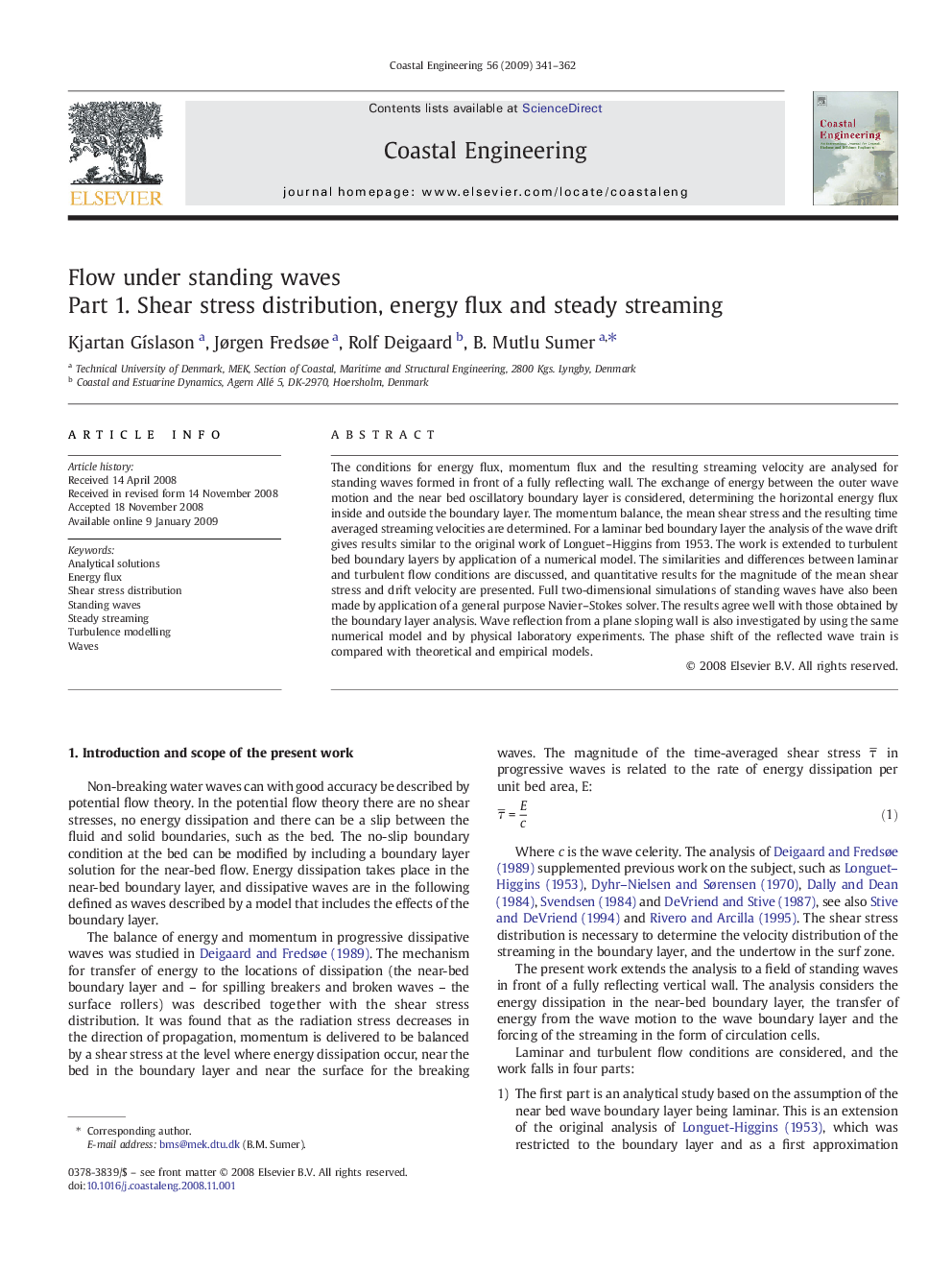| Article ID | Journal | Published Year | Pages | File Type |
|---|---|---|---|---|
| 1721438 | Coastal Engineering | 2009 | 22 Pages |
The conditions for energy flux, momentum flux and the resulting streaming velocity are analysed for standing waves formed in front of a fully reflecting wall. The exchange of energy between the outer wave motion and the near bed oscillatory boundary layer is considered, determining the horizontal energy flux inside and outside the boundary layer. The momentum balance, the mean shear stress and the resulting time averaged streaming velocities are determined. For a laminar bed boundary layer the analysis of the wave drift gives results similar to the original work of Longuet–Higgins from 1953. The work is extended to turbulent bed boundary layers by application of a numerical model. The similarities and differences between laminar and turbulent flow conditions are discussed, and quantitative results for the magnitude of the mean shear stress and drift velocity are presented. Full two-dimensional simulations of standing waves have also been made by application of a general purpose Navier–Stokes solver. The results agree well with those obtained by the boundary layer analysis. Wave reflection from a plane sloping wall is also investigated by using the same numerical model and by physical laboratory experiments. The phase shift of the reflected wave train is compared with theoretical and empirical models.
